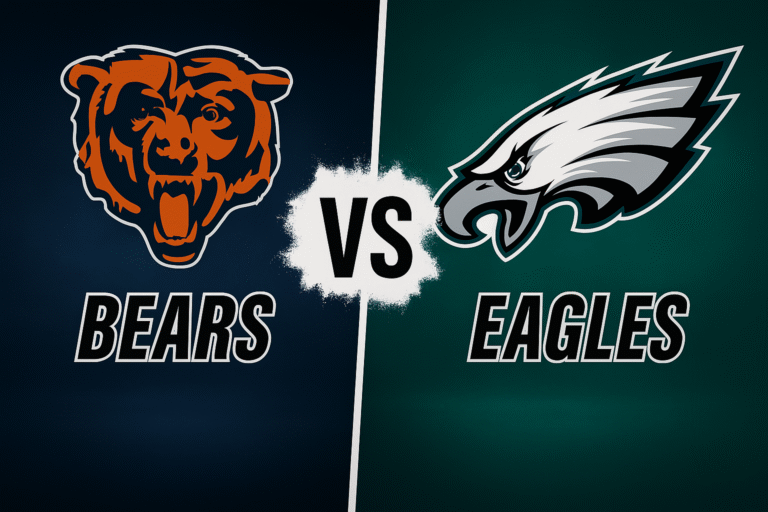I’ve already covered the topic of the Kansas City Chiefs being the latest dynasty to emerge in the NFL. They’ve had a combination of regular-season dominance, elite playoff success, multiple Super Bowl wins, and boast some of the top players across multiple position groups. Despite losing this past Super Bowl they still have a chance to get back on track and become the Greatest Dynasty of All-Time.
Of course… that’s no easy task considering the history of the NFL’s Greatest Dynasties.

Article Highlights
Who Are the Dynasties They Are Up Against???
Intuitively, most NFL fans can pick out the top Dynasty candidates from across NFL history. However, I like to establish criteria to help us define who’s who and what’s what. As such, I’ve come up with the following conditions to help us identify the teams that we should analyze for determining “Who is the Greatest Dynasty.”
Dynasty Conditions:
- The team played in the Super Bowl Era (1966 to today)
- The team has amassed at least 3 Super Bowls within their “Dynasty Clock” period
- The “Dynasty Clock” begins with a Super Bowl win
- The clock resets when there is a Super Bowl win within 4 seasons of the last one
- The clock “runs out” if more than 4 seasons pass between Super Bowl wins
- Championship wins that took place within the 4-season “run-out” are included in the analysis (but the Dynasty Clock does not reset)
Here’s an example of how it works:

As you may have guessed, this means I’m accounting for 2 distinct New England Patriots Dynasties. With that in mind, and based on the conditions above, here’s our Dynasty Teams of the Super Bowl Era:

Special Note: The Green Bay Packers Dynasty technically started before the Super Bowl Era and continued across the 1966-time boundary. Even though they officially only have 2 Super Bowls rings, the NFL Championship from 1965 was a 2-win postseason, which is only one game fewer than a Super Bowl run by a modern-day 1-seed. So… I’m including them.
Oh yeah… The Chiefs Dynasty started before the 2020s (in 2019) … but calling their era the 2020s is more symmetric. So here we go.
What Is the Evaluation Criteria???
As is my way, I’m looking to quantify this… somehow. With that in mind, I’ve come up with 4 areas that need to be considered:
- Regular season success and dominance
- Playoff standings and depth
- Super Bowl Wins
- Roster strength
As I compile the totals for each of these areas, the results will be normalized by determining each team’s ratio compared to the highest total among all the teams. So, if the top team in a specific area has a total of 5 and a different team has a total of 3, their respective ratio values are 1.0 and 0.6. The ratio values from each area are then added together to give us a Total Dynasty Score!!! (queue the dramatic music)

Regular Season Dominance:
We’ll look at both the average Win-Loss% across the Dynasty era for each team and the Simple Rating System (SRS) score. SRS factors in a team’s Strength of Schedule (SOS) and the average point differential, which is known as Margin of Victory (MOV). A high SOS indicates a tough road to the playoffs, while MOV shows how much the team dominated their opponents along the way. And the results are:

- At the top for both best Win-Loss% and SRS score is the 1960s Green Bay Packers. They absolutely dominated the league during their era. They won the most… by a lot… against a high level of competition.
- Right behind them in SRS is the Pittsburgh Steelers who placed in the middle of the pack (4th place) for Win-Loss%. That percentage drops a bit due to the seasons between their two sets of back-to-back Super Bowls. In those seasons they had 10 and 9 wins respectively, representing a low spot for their Dynasty era.
- The Kansas City Chiefs produced the 2nd best Win-Loss%, dropping below 12 wins only once during their era. Interestingly, they had the lowest SRS score, meaning they had a more moderate MOV up against a somewhat modest SOS.
Playoffs Standings & Depth:
As an indicator of a Dynasty’s standings going into the playoffs, I’m counting up the number of Division Titles. This means Division winners get more credit than teams who made the playoffs through a Wild Card berth. Then… in order to capture a team’s depth in the playoffs, we’ll simply count Championship victories. This includes Conference Championships and NFL Championships, such as those that took place before the establishment of the Super Bowl (specifically for the 60s Packers). The results look like this:

- The San Francisco 49ers had the most Division Titles due to having the most seasons in their Dynasty run. It stretched from 1981 to 1989. There was a 3-season gap between their Super Bowl wins in 1984 and 1988. They won 2 of the 3 Division Titles in that time, which raises their overall total.
- The most Championship wins go to both the Green Bay Packers and the Kansas City Chiefs. The Chiefs have the distinction of being the only Dynasty team with two Super Bowl appearances outside of their Super Bowl wins. That’s five appearances in six seasons, which is a historic achievement in its own right.
Super Bowl Wins:
Quite simply… this is the total number of each Dynasty’s Super Bowl trophies.

- As most of us know… both the Steelers and 49ers have Super Bowl records of 4-0 during their Dynasty eras. This includes back-to-back wins for both teams. Remarkably, the Steelers did that twice giving them 4 wins in 6 years with no losses. That is clearly the greatest Super Bowl run in history.
- At the bottom of the “pack” … is the Packers (see what I did there). It must be noted that they had 3 NFL Championships before their 1966 and 1967 Super Bowl wins. One of those took place in 1965 meaning they had an NFL Championship ThreePeat between ‘65 and ‘67. While the elusive Super Bowl ThreePeat has escaped the Packers, Miami Dolphins, Steelers, 49ers, Cowboys, Patriots, and most recently the Chiefs, the Packers are the only team to ThreePeat in (or at least crossing into) the Super Bowl Era.
- They also have an NFL Championship ThreePeat that ran from 1929 to 1931. They are quite the historic franchise.
Roster Strength:
Assessing a Dynasty is just as much about the historical nature of the team’s ensemble as it is about their accomplishments. These teams didn’t feature just a couple of legendary, stand-out stars. These teams were stacked with elite talent across their line-up. It becomes very compelling to understand how many players on each team earned top accolades and how many position groups included those players. The accolades in question are:
- MVP
- Offensive Player of the Year (OPOY)
- Defensive Player of the Year (DPOY)
- 1st team All-Pro
The position groups are:
- Quarterback
- Running Backs
- Receivers (Wide-outs and Tight Ends)
- Offensive Line
- Defensive Line
- Linebackers
- Defensive Backs
I’m not counting the instances of the awards earned by each player in each season. I’m counting how many players across the Dynasty era had at least one of those accolades. The results look something like this:

- Here we see the Green Bay Packers had the most players with one or more of those accolades. This includes MVPs for Half Back Paul Hornung, Full Back Jim Taylor and Quarterback Bart Starr. It’s the only backfield in history where all three starters were MVP award winners. Despite all those accolades they did not have a member of the receiver corps that was named at least 1st team All-Pro. That leaves them with 6 Position Groups that featured player with top honors.
- The Pittsburgh Steelers and San Francisco 49ers each had 7 position groups awarded top accolades during their respective Dynasty eras. These awards included two MVPs for Joe Montana, two OPOY awards for Jerry Rice, and one OPOY for Roger Craig.
- The Steelers offense featured Terry Bradshaw with an MVP, and 1st team All-Pro designations for receivers Lynn Swann & John Stallworth, running back Franco Harris, and center Mike Webster. But it was the famous “Steel Curtain” defense that dominated the other side of the ball with 4 DPOY Awards distributed among 3 players. This includes DT Mean Joe Greene twice, CB Mel Blount, and ILB Jack Lambert. Add in 1st team All-Pro selections for OLB Jack Ham and DE L.C. Greenwood and we have perhaps the greatest defense of all-time.
And the Greatest Dynasty of All-Time Is…
If you’ve been keeping track, you might know the answer already… but here’s the total breakdown:

As you can see, the team with the greatest Dynasty Score is the 1970s Pittsburgh Steelers. They’re tied for the most Super Bowl wins and position groups represented by 1st team All-Pro level talent or better, with MVP at Quarterback and DPOY for all three defensive levels (D-Line, Linebacker, Defensive Back). They were also in 2nd for just about all other categories, namely total Accolades, Championships, Division Titles, and SRS score. They did finish in 4th place for Win-Loss%, but no other team had as many 1st and 2nd place finishes across the categories as Pittsburgh.
Looking back across history, considering dominance in the regular season, playoff standings & depth, Super Bowl wins, and strength of roster, the Pittsburgh Steelers Dynasty from 1974 to 1979 is the Greatest Dynasty in the history of the NFL… says me😉




